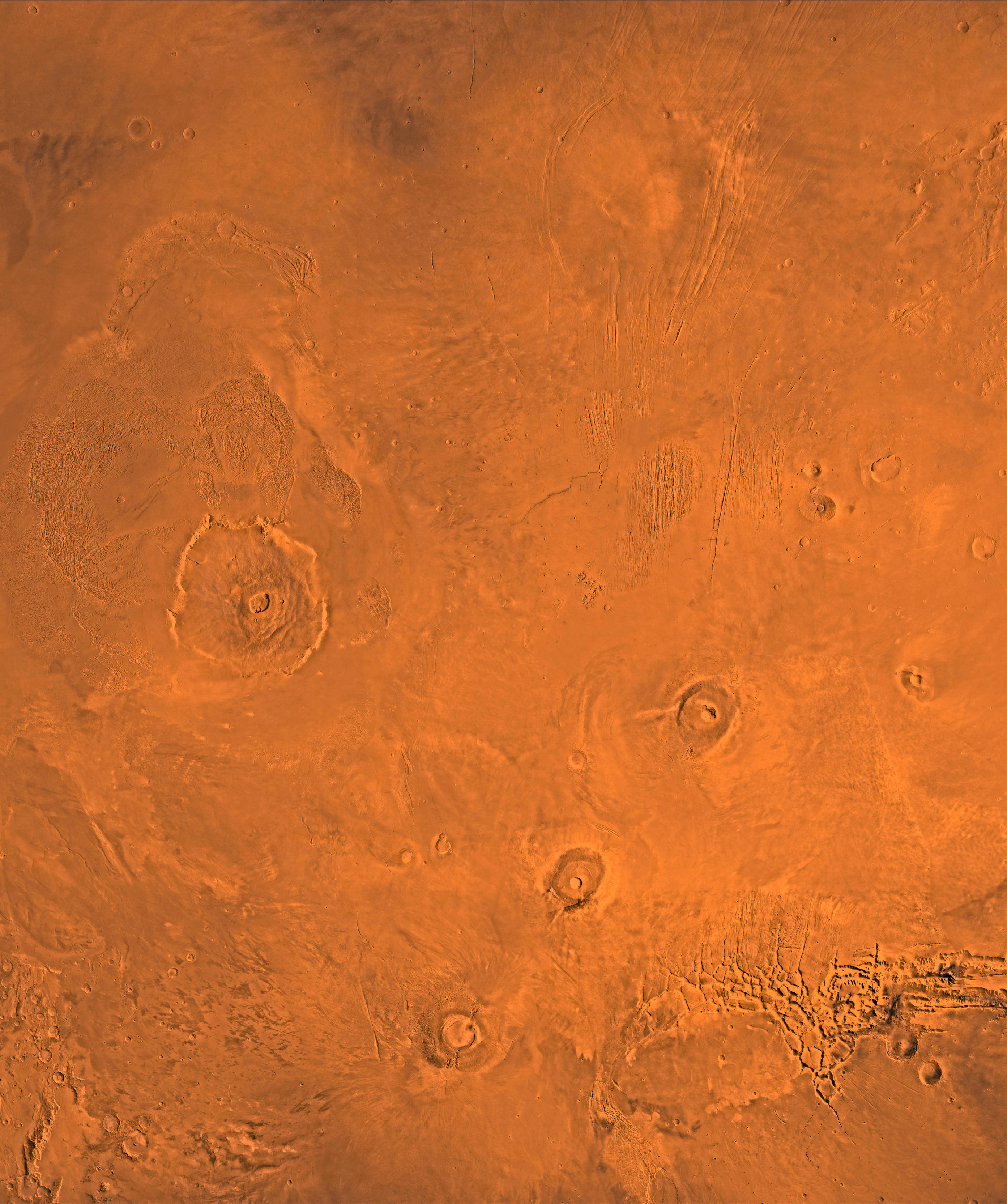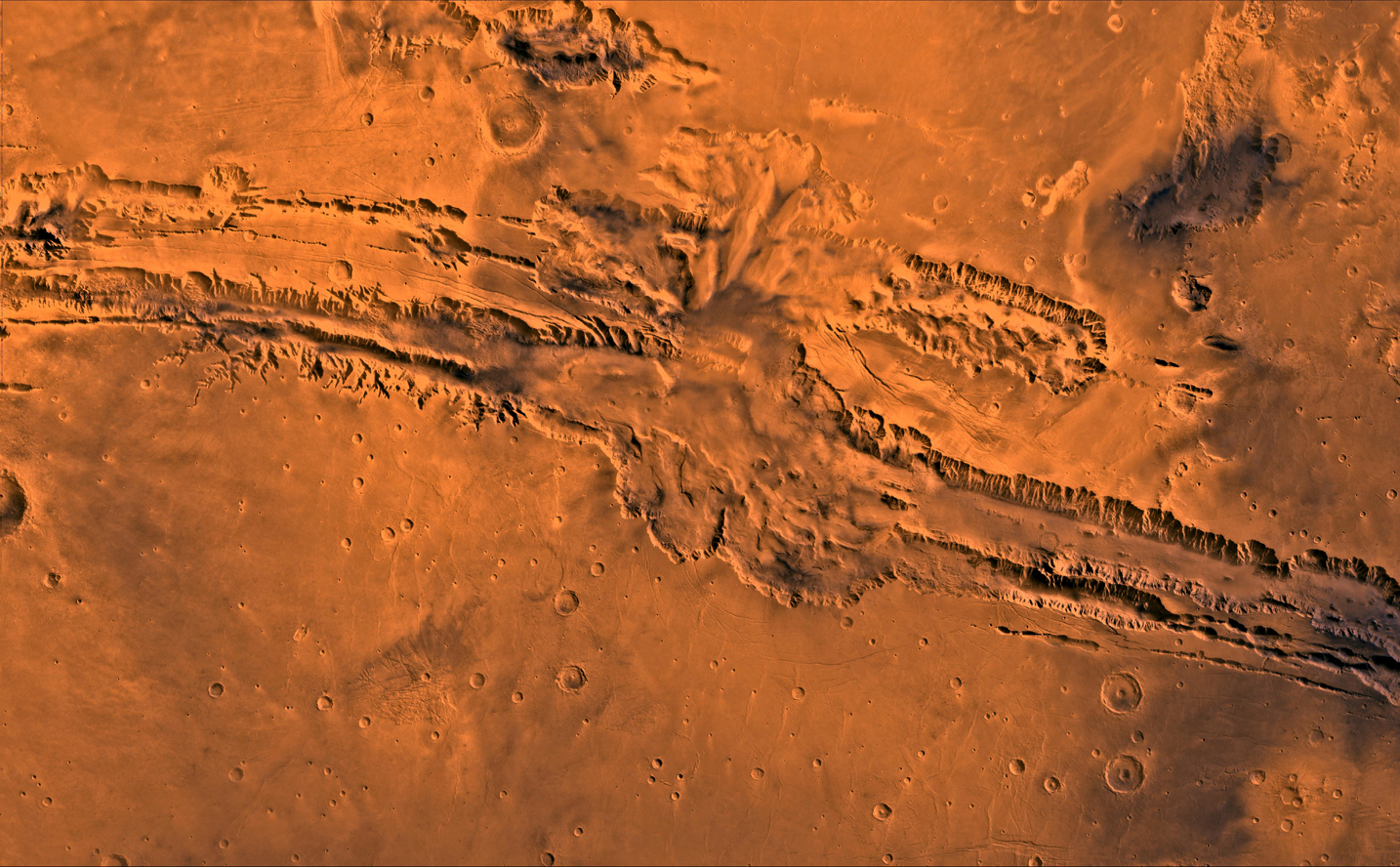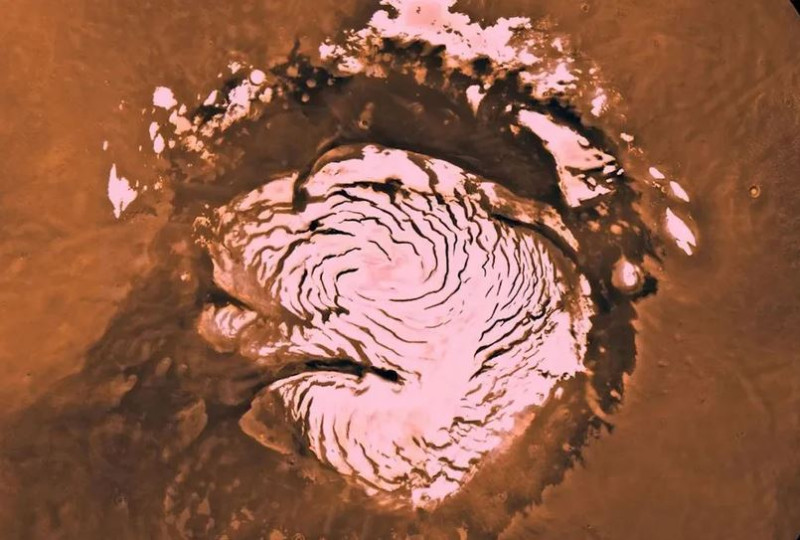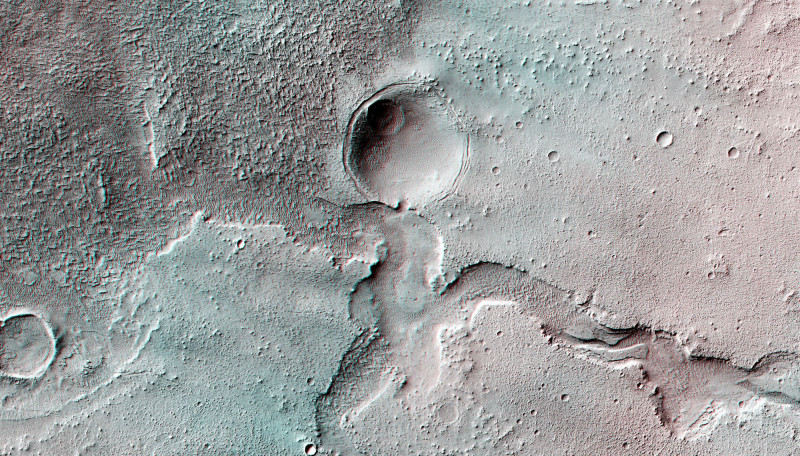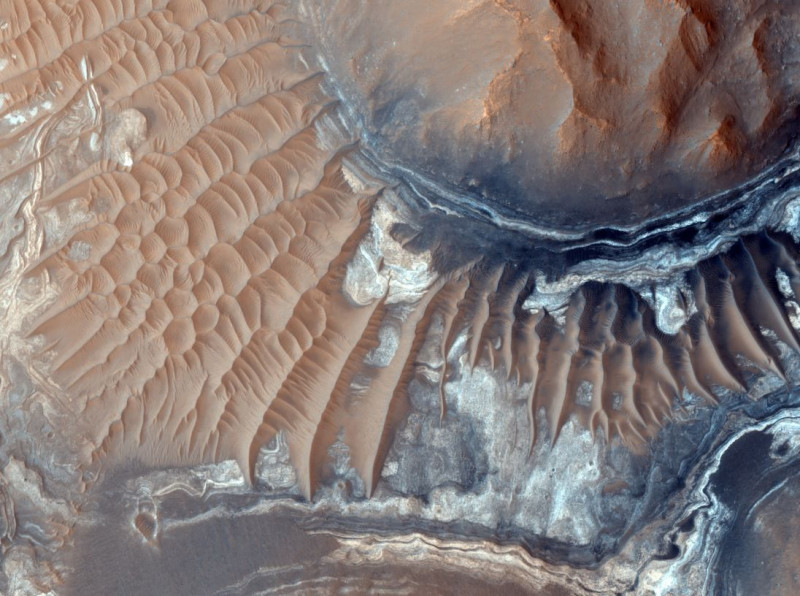In addition to the largest volcano in the solar system, the Red Planet also has the largest canyon, something like the Grand Canyon of Mars
With space travel now a reality and the colonization of Mars within NASA’s immediate plans, many foreign media and websites are now taking it a step further, presenting the tourist attractions of the Red Planet.
Indicatively, Live Science singled out 7 locations as the planet’s best sights – some in the landing areas of future missions and others just days away.
1. Mount Olympus
Mount Olympus is the tallest volcano discovered in our solar system – Its height, 25 kilometers, is three times that of Mount Everest on Earth.
According to NASA, it is located in the Tharsis volcanic region and is about the same size as the US state of Arizona.
As a mountain it is probably easy for the would-be explorer-climber to climb as its average gradient is only 5%.
2. The volcanoes of Tharsida
Near Mount Olympus is the region of Tharsis, which is defined by the three great mountains and hosts 12 giant volcanoes in a zone about 4,000 kilometers wide.
Like Olympus, these volcanoes tend to be much larger than those on Earth, possibly because Mars has a weaker gravitational pull that allows the volcanoes to grow taller.
3. Mariner’s Valley (Grand Canyon of Mars – center photo)
In addition to the largest volcano in the solar system, the Red Planet also has the largest canyon. Mariner Valley is a canyon about 3,000 kilometers long according to NASA, four times longer than the Grand Canyon.
Researchers aren’t sure how Mariner’s Valley was created, but many believe it was formed when lava from volcanic eruptions in Tharsis – pushed the crust up, creating rifts in other areas. Over time, these faults developed into the Mariner Valley.
4. The poles
Mars has two icy regions at its poles. The north pole (pictured) was studied by the Phoenix lander in 2008, while the south pole has only been observed by orbiting craft.
During winter, according to NASA, temperatures near both the North and South Poles are so cold that carbon dioxide in the atmosphere condenses into ice on the surface.
The process reverses in summer, when carbon dioxide evaporates and re-enters the atmosphere.
5. Gale Crater and Mount Aeolis
Gale Crater became famous when the Curiosity rover landed there in 2012, as it is full of evidence of the presence of water on Mars in the past.
Curiosity is now atop a nearby volcano called Mount Aeolis (Aeolis Mons, or Mount Sharp) and is examining geological features in each of its layers. In 2018, he identified organic components within 3.5 billion-year-old rocks. The rover also found that methane concentrations in the atmosphere change over the seasons.
Methane is an element that can be produced by microbes as well as by geological phenomena, so it is unclear whether it is a sign of life.
6. Medusae Fossae Formation
This huge enigmatic formation – about a fifth the size of the US – is one of the strangest sites on Mars, with some even speculating that it harbors evidence of an alien craft crash.
The most likely explanation is that these are rocks that resulted from volcanic eruptions that took place hundreds of times over a period of 500 million years.
7. “Ghost Dunes”
Water may have disappeared from the Red Planet, but there is extensive evidence of water in the past, such as the “ghost dunes” found in the Noctis Labyrinthus and the Hellas basin.
According to the researchers, these dunes were tens of meters high but were flooded by lava or water, which preserved their bases while their tops eroded.
Ancient sand dunes like these show how winds used to blow on Mars, where microbes could be hiding, safe from the radiation and wind that would have blown them away.
Source :Skai
I am Frederick Tuttle, who works in 247 News Agency as an author and mostly cover entertainment news. I have worked in this industry for 10 years and have gained a lot of experience. I am a very hard worker and always strive to get the best out of my work. I am also very passionate about my work and always try to keep up with the latest news and trends.


